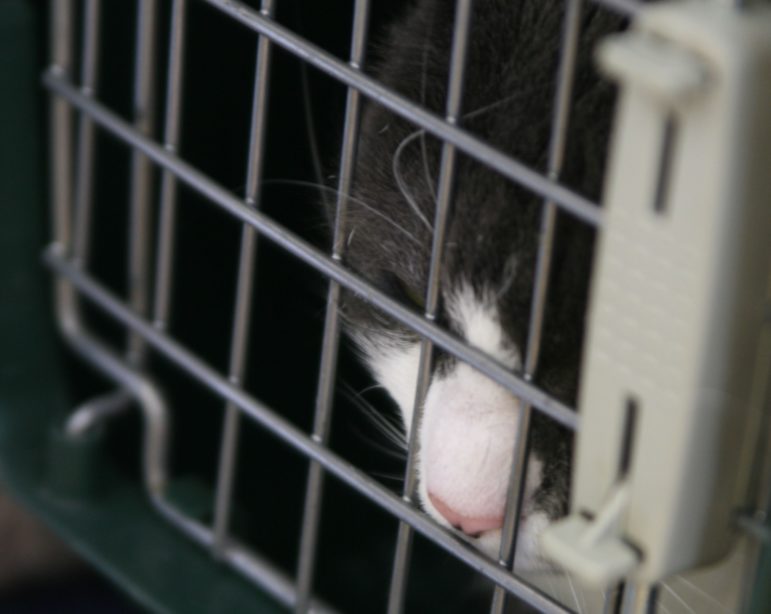
Quinn.Anya
Domestic violence impacts all members of a family, including pets, and as many as 48 percent of domestic violence victims stay in abusive situations because they don’t want to leave their pet behind. This is fueled by the fact that a very limited number of domestic violence shelters in New York City and the U.S. are equipped to take pets, and even fewer shelters allow families to live together (known as “co-sheltering”) with their pets. The lack of co-sheltering programs across the U.S. forces many victims and their families to make the impossible choice between staying in an abusive situation and abandoning their pet. This in turn creates a cycle of abuse where the family and pets are increasingly put at risk and exposed to additional forms of violence.
In 2015 in New York City, there were 26 intimate partner homicides, and the New York City Police Department responded to over 279,051 domestic incidents. Clearly there is a demand for services that help this vulnerable population, and more attention must be paid to members of this group that also have pets. Despite this high need, Urban Resource Institute’s PALS (URI People and Animals Living Safely) program is the only service in New York City and one of the few nationally that provides a safe haven for victims of domestic violence to escape abuse and live together with their pets.
The shortage of pet-friendly programs is also driven by a lack of understanding of the connection between domestic violence and pet abuse and a lack of data to illuminate this connection. In the past few years, URI has worked directly with domestic violence survivors (families and pets) to learn more about the factors that contributed to them staying in an abusive situation, what drove them to make the decision to leave, and the types of abuse they endured. Through our research we’ve found further evidence supporting the need for co-sheltering programs and the severe consequences of victims being unable to leave abusive situations out of concern for their pets.
Thirty-four percent of URI shelter residents who had a pet at any point while in an abusive relationship said their abusive partner inflicted physical harm on their pets. Additionally, 71 percent of callers to URI’s emergency shelter hotline indicated that they would like their pet to reside in shelter with them, and this is where the gap between the needs of survivors and the services available is most dramatic. Domestic-violence organizations need to step up to the plate and implement co-sheltering programs that will allow families, including pets, to stay together as they flee abuse and as they heal.
Often asked is why the domestic violence community should devote precious resources to services for pets when we already have limited funds for projects focused on the human population. The answer is that the well-being of the two populations (pets and humans) is inextricably linked. Abusers often use the threat of violence or actual violence against pets as leverage to control their victims. By allowing people to escape to a shelter with their pets, we are removing a barrier to safety for survivors. As a result, more people will choose to leave their abusive relationship and seek safety. The notion that pets are removed from or unrelated to the issue of domestic violence is a misconception that ends up causing real harm to survivors.
Nonprofits that serve human populations may be intimidated by the prospect of working with animals. In order to overcome this, domestic violence providers should look to form partnerships with the animal welfare community. URI itself has worked with a number of organizations including Purina, the Mayor’s Alliance for New York City’s Animals, and the ASPCA. These partnerships have provided URI with supplies/services for pets and helped to teach us about caring for pets within our own shelter system. I urge any domestic violence program considering implementing a co-sheltering model to establish partnerships with their local animal welfare community. By utilizing the expertise of these organizations, domestic violence service providers can start the process of creating their own pet-friendly programs.
The bond between people and pets is extremely powerful. By ignoring the impact of this bond on the decision-making process of those in abusive situations, the domestic violence provider community is failing to understand a major component of why victims are unable or unwilling to leave their abuser. If we hope to save more families from abuse, we must make a concerted effort to increase the number of co-sheltering programs for pets and people. New York City serves as a model for the country in many respects, and expanding co-sheltering here will go a long way toward showing organizations across the nation that the important issues of domestic violence and animal welfare are connected and that co-sheltering is a key strategy to protect vulnerable people and pets.
***
Nathaniel Fields is president and CEO of Urban Resource Institute, one of New York City’s largest providers of services for victims of domestic violence victims and their families.








